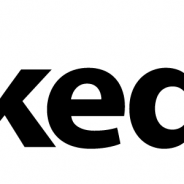Blog
Warning: Use of undefined constant user_level - assumed 'user_level' (this will throw an Error in a future version of PHP) in
/home/zzgspc5zic0z/domains/findthecapital.com/html/wp-content/plugins/ultimate-google-analytics/ultimate_ga.php on line
524
Posted by Lisa Virkus on 7:55 pm in From Find the Capital, Sales and Marketing, Videos | 0 comments

Warning: Use of undefined constant user_level - assumed 'user_level' (this will throw an Error in a future version of PHP) in /home/zzgspc5zic0z/domains/findthecapital.com/html/wp-content/plugins/ultimate-google-analytics/ultimate_ga.php on line 524
Warning: Use of undefined constant user_level - assumed 'user_level' (this will throw an Error in a future version of PHP) in /home/zzgspc5zic0z/domains/findthecapital.com/html/wp-content/plugins/ultimate-google-analytics/ultimate_ga.php on line 524
Article and Video by, Brent Virkus of Find the Capital So we all want to get noticed more in the search rankings. One great way to do so is to get your image to show up for your posts or web pages that show up on a Google search. These are the simple steps to accomplish this: Step 1 Set up a Google+ account. You can do so at the following link: https://plus.google.com Step 2 Go to the “About” section o
read more
Posted by Lisa Virkus on 2:40 pm in Personal Investing | 0 comments

Warning: Use of undefined constant user_level - assumed 'user_level' (this will throw an Error in a future version of PHP) in /home/zzgspc5zic0z/domains/findthecapital.com/html/wp-content/plugins/ultimate-google-analytics/ultimate_ga.php on line 524
Warning: Use of undefined constant user_level - assumed 'user_level' (this will throw an Error in a future version of PHP) in /home/zzgspc5zic0z/domains/findthecapital.com/html/wp-content/plugins/ultimate-google-analytics/ultimate_ga.php on line 524
Article by, By Morgan House of the Motley Fool You are your own worst enemy. Those are the six most important words in investing. Shady financial advisors and incompetent CEOs don’t harm your returns a fraction of the amount your own behavior does. Here are 15 cognitive biases that cause people to do dumb things with their money. 1. Normalcy bias Assuming that because something has never happened before, it won’t (or can’t) happen in the future. Everything that has ever happened in history was “unprecedented” at one time. The Great Depression. The crash of 1987. Enron. Wall Street bailouts. All of these events had never happened… until they did. When Warren Buffett announced he was looking for candidates to replace him at Berkshire Hathaway, he said he needed “someone genetically programmed to recognize and avoid serious risks, including those never before encountered.“ Someone who understands normalcy bias, in other words. 2. Dunning-Kruger effect Being so bad at a task that you lack the capacity to realize how bad you are. Markus Glaser and Martin Weber of the University of Mannheim showed that investors who earn the lowest returns are the worst at judging their own returns. They had literally no idea how bad they were. “The correlation between self-ratings and actual performance is not distinguishable from zero” they wrote. 3. Attentional bias Falsely thinking two events are correlated when they are random, but you just happen to be paying more attention to them. After stocks plunged 4% in November 1991, Investor’s Business Daily blamed a failed biotech bill in the House of Representatives, while The Financial Times blamed geopolitical tension in Russia. The “cause” of the crash was whatever the editor happened to be paying attention to that day. 4. Bandwagon effect Believing something is true only because other people think it is. Whether politicians or stocks, people like being associated with things that are winning, so winners build momentum not because they deserve it, but because they’re winning. This is the foundation of all asset bubbles. 5. Impact bias Overestimating how big of an impact an event will have on your emotions. Most people are utterly terrible at predicting how happy they’ll be after receiving a raise, or getting a new job, particularly as time goes on. We get used to more (or less) money quickly, but it’s extremely difficult to realize that before it happens. Your financial goals might change after coming to terms with this. 6. Frequency illusion Once you notice an event, it seems to keep happening over and over. But it’s often not; you’re just paying more attention to something you were once oblivious to. The 2008-09 market crash was such a memorable event that I think investors and the media became infatuated with today’s “volatile market.” But the last three years have actually had below-average market volatility. We’re just more attuned to normal market swings than usual. 7. Clustering illusion Thinking you’ve found a pattern by taking a small sample out of a much larger one. For example, we know stocks’ daily movements over time are random and unpredictable, but you could take a four-day period where a stock went up, up, down, down, and think you’ve found a trend. Day traders are attracted to clustering like bugs to bright lights. 8. Status quo bias Irrationally wanting things to stay the same. People do this in...
read more
Posted by Lisa Virkus on 2:19 pm in Running Your Business, Videos | 0 comments

Warning: Use of undefined constant user_level - assumed 'user_level' (this will throw an Error in a future version of PHP) in /home/zzgspc5zic0z/domains/findthecapital.com/html/wp-content/plugins/ultimate-google-analytics/ultimate_ga.php on line 524
Warning: Use of undefined constant user_level - assumed 'user_level' (this will throw an Error in a future version of PHP) in /home/zzgspc5zic0z/domains/findthecapital.com/html/wp-content/plugins/ultimate-google-analytics/ultimate_ga.php on line 524
By Dave Lerner, Entrepreneur Fabrice Grinda is the founder of OLX, one of the largest classified websites in the world, and he’s very excited about the emerging digital markets Russia and Brazil. His company, which Grinda describes as Craigslist 2.0 for the rest of the world, is rapidly expanding there, and as a tech investor he’s putting money into startups from those countries, as well. “These are two of the hottest Internet markets in the world right now,” said Grinda, who notes that GDP growth is fueling similar growth in the digital sector in these emerging markets. In additional to his views on Brazil and Russia, Grinda shares his thoughts on why he considers himself an entrepreneurial thief, what he considers when deciding to fund a company, and the “secret sauce” for running a successful consumer Internet company. This is the story of how he went from being broke in 2001, to being a successful startup founder and prolific investor just a decade...
read more
Posted by Lisa Virkus on 5:23 pm in From Find the Capital, Running Your Business, Sales and Marketing, Videos | 0 comments

Warning: Use of undefined constant user_level - assumed 'user_level' (this will throw an Error in a future version of PHP) in /home/zzgspc5zic0z/domains/findthecapital.com/html/wp-content/plugins/ultimate-google-analytics/ultimate_ga.php on line 524
Warning: Use of undefined constant user_level - assumed 'user_level' (this will throw an Error in a future version of PHP) in /home/zzgspc5zic0z/domains/findthecapital.com/html/wp-content/plugins/ultimate-google-analytics/ultimate_ga.php on line 524
Article by, Lisa Virkus – Founder of Find the Capital To quote the great Al Pacino… “Life’s this game of inches. The inches we need are everywhere around us. It’s the guy that’s willing to go that extra inch that dominates his goals Because, when we add up all those inches, that’s gonna make the difference between winning and losing!” So summer is finishing up, Labor Day is upon us and, after the upcoming long weekend, are you are ready to dominate the 4th quarter? As you know, I founded Find the Capital to provide you the tools and resources to grow your business. Remember, the inches we need are all around us. We’ve got 7 days to till it’s time to get serious and “hit the ground running”. To help jump start your 4th quarter, I thought I’d share with you Find the Capital’s 4 Simple Steps to Goal Setting and dominating your competition. Let’s take a look at the 4 steps: The GET Step What do you want? Decide what it is you want and write it down. Make a list of all the things you’d like to do, goals you’d like to achieve, a list of all the places you want to go, and everything else you want to accomplish. Put it in writing! The ORGANIZE Step Organize your plan by listing every step that it will take to get you what you want. Now, organize your plan by prioritizing your list. Make a list of the order that will best accomplish your goal. If some of the items on your list look overwhelming, break them down into more manageable pieces. The ACTION Step Take some action every day to move you toward your goals. Write down the three or four things that are most important to do every day, week, and month to move you toward your goals and plan when to do them. Then do them! The LIST Step Make lists as you go. List what you want. List how to get there. List the steps you need to take to accomplish your actions. List the obstacles that might get in your way. List how to overcome them. List your action steps. By writing things down, you form a commitment to get them done and give your subconscious some work to do! The SUCCESS Step Enjoy your success! Each time you accomplish part or all of a goal you’ll boost your confidence and give you the motivation to go on and finish something else. I wish it was more complicated than that… Remember – Life’s this game of inches. It’s the guy that’s willing to go that extra inch that dominates his competition. Now let’s have a little fun and check out a rather motivating video about Winnin, Losin and Livin… “How to Quickly & Easily Finish Your Marketing Plan in 8 Hours or Less!“ Watch this FREE Presentation to Discover A Simply Marketing Plan “Short-Cut”…. ...
read more
Posted by Lisa Virkus on 6:47 pm in Project Financing | 0 comments

Warning: Use of undefined constant user_level - assumed 'user_level' (this will throw an Error in a future version of PHP) in /home/zzgspc5zic0z/domains/findthecapital.com/html/wp-content/plugins/ultimate-google-analytics/ultimate_ga.php on line 524
Warning: Use of undefined constant user_level - assumed 'user_level' (this will throw an Error in a future version of PHP) in /home/zzgspc5zic0z/domains/findthecapital.com/html/wp-content/plugins/ultimate-google-analytics/ultimate_ga.php on line 524
Article by, Dave Lavinsky – Growthink There are hundreds of thousands of individual or “angel” investors in the United States (and many more throughout the world). This is many, many times greater than the mere 6,000 members of angel investor groups. And here’s the key: the vast majority of these individual investors are what I call “latent angel investors.” That is, they have the interest and ability to make an angel investment. But they don’t actively seek to make angel investments. Basically, you have to find them and pitch them, since they aren’t actively seeking entrepreneurs to fund. And in most cases, they’ve never before invested in a private company. So, who are these “latent angel investors?” The short answer is that they are people with money. I sat down this morning and wrote brief profiles of some the angel investors that have funded some of Growthink’s clients. Here they are (I changed the people’s names for privacy reasons). Roger is a lawyer. Alan is an executive at a large consulting firm. Bill is the COO of the US branch of a multi-national corporation. Allison is a restaurant owner. Randy owns a small consulting firm. Catherine is an executive at a large financial services company. Robert used to run his own business and is now retired. He does some consulting on the side. Victor is from Europe. He attended business school in the United States. He now has business ventures throughout the world including one in the United States. Josh is a super successful entrepreneur in his early thirties. He had a lot of success in his first venture, and continues to launch new companies. Richard is a retired executive from a Fortune 500 company. Here’s some additional info: All but two of these angel investors are between the ages of forty and sixty five. All but three of them live within 20 miles of the companies they funded. And of the three, two live within an hour’s flight or 3 hour drive. The key lesson here is this: potential angel investors are all around you. They are current and retired doctors, lawyers, executives, business owners and otherwise successful people with money (interestingly, none of my current clients have doctors as investors that I know of; although doctors are very common angel investors). Yes, there are specific ways to contact and present your venture to these investors that I explain in my Angel Investor Formula, but the key is to network, network, network. Don’t be shy. Rather, start telling people about your venture and get referrals to people with money that could invest in your...
read more
Posted by Lisa Virkus on 5:23 pm in Running Your Business | 0 comments

Warning: Use of undefined constant user_level - assumed 'user_level' (this will throw an Error in a future version of PHP) in /home/zzgspc5zic0z/domains/findthecapital.com/html/wp-content/plugins/ultimate-google-analytics/ultimate_ga.php on line 524
Warning: Use of undefined constant user_level - assumed 'user_level' (this will throw an Error in a future version of PHP) in /home/zzgspc5zic0z/domains/findthecapital.com/html/wp-content/plugins/ultimate-google-analytics/ultimate_ga.php on line 524
Article by, Dave Lavinsky of Growthink There are many websites, such as ODesk, Guru, and Elance, on which you can find people and firms to which you can outsource projects. Regardless of the site you choose, the key is to get the largest pool of qualified providers to apply for your project. This way, you have more people from which to choose. Even if you only hire one, you can go back and contact the same pool of talent for future projects later. Consider applicants as being in your “rolodex” of people to contact in the future. Below are tips to keep in mind when posting your project. In a nutshell, you want to include all of the information that an applicant needs to know, but do so succinctly. If anything is left out, you’ll have to go back and answer their questions about it later. It’s always easier to clarify everything up front. Create a Clear Project Title Here, include the work to be performed, on what, and in what industry. For example, “Help Developing Ebook” could mean anything from research to writing to editing to cover design. Compare that to “Writing 10,000 Word Real Estate Ebook.” The latter will be more likely to catch the eye of writers with real estate knowledge. Create a Clear Project Description This sounds simple enough, but you should try to answer as many possible questions as you can, which means addressing certain areas, like: The scope of the project. In the above example, wanting a 10,000-word Ebook written vs. 20,000 words would be helpful information for applicants to know. This helps them estimate the time it will take them and therefore their bid for the project. If you are paying hourly, it will help prevent misunderstandings later. Software needed. Make sure they at least have Microsoft Word and Excel, if that’s what you use. Other software is industry-specific, like Adobe Photoshop among graphic designers. You may or may not know what software is needed for things you don’t specialize in, but you will soon enough. All other things equal, choose the person who already has the best software for the job, as you’ll get better results. Programming languages. Some website projects require that the provider knows certain programming languages besides standard html, such as PHP, AJAX, etc. In these cases, it’s better to post “PHP Programmer Needed to…” than just “Programmer.” You’ll get fewer, but more qualified responses. If you don’t know what languages are needed, either ask a friend or do a Google search beforehand, or you could post in the project that you don’t know what language is needed, and ask them to make suggestions. Ideally, you will want to hire people who can educate you, so this sets the tone right from the beginning. I know some people who post $10 projects for 30 minutes of a programmer’s time just to have their questions answered. Payment amount. First, decide if you want to pay them by the hour, or for the whole project. There are pros and cons to both. If you estimate that something will take 5-8 hours, going hourly is fine. For work that will take longer than that or that has a higher likelihood of uncertainty, I would try a project-basis. Sometimes you can’t estimate how long something will...
read more
Posted by Lisa Virkus on 5:17 pm in Personal Investing | 0 comments

Warning: Use of undefined constant user_level - assumed 'user_level' (this will throw an Error in a future version of PHP) in /home/zzgspc5zic0z/domains/findthecapital.com/html/wp-content/plugins/ultimate-google-analytics/ultimate_ga.php on line 524
Warning: Use of undefined constant user_level - assumed 'user_level' (this will throw an Error in a future version of PHP) in /home/zzgspc5zic0z/domains/findthecapital.com/html/wp-content/plugins/ultimate-google-analytics/ultimate_ga.php on line 524
Article by, Marr Koppenhefler – The Motley Fool “Confidential information has been omitted from the public Form 13F report and filed separately with the U.S. Securities and Exchange Commission.” That’s the line that careful readers may have found in Berkshire Hathaway‘s (NYSE: BRK-B ) 13F filing — the SEC filing that discloses the company’s major stock positions. Mysterious, right? So very un-Buffett. Unless, maybe, it isn’t. This isn’t a line that commonly shows up in a Berkshire 13F, but it’s not something we haven’t seen before. In the August 2011 filing, there was a very similar line: “Confidential information has been omitted from the Form 13F and filed separately with the Commission.” That timing should set off some bells for the close Berkshire watchers out there. It was just three months after that filing that Buffett revealed a huge position in IBM. The size of the IBM stake quickly vaulted it to among Berkshire’s largest holdings, and is now mentioned by Buffett in the same breath as Wells Fargo, Coca-Cola, and American Express when he talks about Berkshire’s “Big Four” investments. Flip back to today’s filing, and the logical conclusion would be that Buffett is once again building a large stake in a new investment, and is trying to keep quiet about it to keep the copy-cat investors away. There’s plenty of room to speculate on what Buffett might be buying now. We could see him surprise the peanut gallery again by going with a name from the tech arena or another industry seen as outside of his normal strike zone. However, if I were betting on it, due to the overwhelming odds, I’d wager that the new addition will be either a financial or consumer goods company. Consider that, with IBM as the exception, eight of Berkshire’s nine largest stock holdings are in one of those two categories. And depending on how you want to treat DIRECTV — not a Buffett pick, by the way — we could say nine of 10. If we’re looking at financials, I wouldn’t be too surprised if Discover (NYSE: DFS ) made it into the portfolio. This is a business with a strong franchise and a record of strong equity returns. And, when we consider that American Express has long been a Buffett favorite, and both Visa and Mastercard can already be found in the Berkshire portfolio, this would essentially complete Buffett’s set of credit card trading cards. JPMorgan (NYSE: JPM ) is another possibility in the finance sector. Buffett personally owns shares, and has spoken out many times in favor of the bank’s CEO Jamie Dimon. A Berkshire purchase could be slightly irksome for Buffett from a conflict-of-interest angle if he hasn’t sold his shares, but I don’t think that counts it out. Consumer goods stocks aren’t trading at the discounts that are available in the financials sector, but that doesn’t necessarily preclude a Berkshire buy there. After all, the Heinz takeout wasn’t at a bargain-basement price. If Buffett took a big position in a company in this industry, I’d expect that it’d be “obvious” — that is, a well-recognized company with massive brand power and a record of stellar returns. General Mills (NYSE: GIS ) and Clorox (NYSE: CLX ) are two quality picks that would make sense for Buffett to load up on. Neither is the next quick 10-bagger, but both are quality, stable companies that would be very much at home among Berkshire’s other top holdings — not to mention produce solid returns for...
read more
Posted by Lisa Virkus on 5:09 pm in Sales and Marketing | 0 comments

Warning: Use of undefined constant user_level - assumed 'user_level' (this will throw an Error in a future version of PHP) in /home/zzgspc5zic0z/domains/findthecapital.com/html/wp-content/plugins/ultimate-google-analytics/ultimate_ga.php on line 524
Warning: Use of undefined constant user_level - assumed 'user_level' (this will throw an Error in a future version of PHP) in /home/zzgspc5zic0z/domains/findthecapital.com/html/wp-content/plugins/ultimate-google-analytics/ultimate_ga.php on line 524
Article by, Libby Kane – Forbes What do you do with your LinkedIn profile? Do you check it only every once in a while when a connection request comes through? Have you linked it to your Twitter account? Did you never quite remember to sign up in the first place? As much as it’s convenient to merge our Facebook, Twitter, Tumblr and Instagram accounts into one large social networking experience, LinkedIn has a special designation: professional networking. And there is a difference between professional and personal networking, according to LinkedIn Career Expert Nicole Williams: “I see the same mistakes over and over!” And, on LinkedIn, those faux pas can damage your career. In fact, data shows that LinkedIn is especially helpful when it comes to landing higher-paying jobs—”informal recruitment” is a favorite of hiring managers aiming to fill positions up there on the payscale. So whether you’re hunting for a new job, making the most of the one you have or just looking to learn about professional possibilities, avoid these eight big LinkedIn mistakes. 1. Not Using a Picture “One of the biggest mistakes I see is no photo,” Williams says. “You’re seven times more likely to have your profile viewed if you have one. Like a house that’s on sale, the assumption is that if there’s no photo, something’s wrong.” She also makes a great point: If you leave a networking event with a handful of business cards, intending to follow up on LinkedIn, it’s much harder for you to remember who’s who without pictures. A missing photo can easily lead to missed connections. If you’re worried about unwittingly sabotaging your career through social media, check out the ten worst blunders you can commit. 2. Putting Up the Wrong Picture “No dog, no husband, no baby!” Williams says, adding that your photo is meant to show you at your professional—not personal—best. “Especially for mothers getting back into the workforce, a picture of their child doesn’t convey that they’re ready for a full-time job.” Another photo blunder: Misrepresenting your appearance. “I see older people who are worried about age discrimination use a photo of themselves in their 30s, but an interviewer wasn’t expecting them to look so different. And instead of listening to your answers, the interviewer will think you’re deceptive,” Williams confides. “Unless you’re getting hired for a modeling gig, people are just looking for energy, which you can communicate through great posture, open eyes and a smile.” In fact, HSN Beauty found that, when paging through LinkedIn profiles, 19% of recruiters look only at your profile picture. 3. Skipping the Status Between Twitter and Facebook , people have a pretty good idea of what you’re up to socially. But your LinkedIn status is the right place to update your network about your professional accomplishments and progress. “You could be updating about a colleague getting a promotion or sharing a great article you wrote,” Williams suggests. “Every few days, put something in your status to keep it fresh, and show you’re active and engaged—no one will know what you’ve done if you’re not showing it off.” Plus, those people you’re updating in your LinkedIn network are valuable. “If you’ve got a great following, it’s part of the assets you bring to the table,” she adds. 4. Using the Default Connection Request “Don’t use the standard connection...
read more
Posted by Lisa Virkus on 7:11 pm in From Find the Capital, Personal Investing | 0 comments

Warning: Use of undefined constant user_level - assumed 'user_level' (this will throw an Error in a future version of PHP) in /home/zzgspc5zic0z/domains/findthecapital.com/html/wp-content/plugins/ultimate-google-analytics/ultimate_ga.php on line 524
Warning: Use of undefined constant user_level - assumed 'user_level' (this will throw an Error in a future version of PHP) in /home/zzgspc5zic0z/domains/findthecapital.com/html/wp-content/plugins/ultimate-google-analytics/ultimate_ga.php on line 524
Article by, Brent Virkus – Senior Managing Director at Find the Capital I spent over 20 years in the investment business working for some of the largest firms in the industry. One of the best strategies I ever implemented for my clients was The Dow Ten Strategy or The Dog’s of the Dow. The “Dogs of the Dow” strategy is one of the simplest for beating the market. The strategy The Dogs strategy involves buying and holding equal dollar amounts of the 10 best-yielding dividend stocks of the Dow Jones Industrial Average (DJINDICES: ^DJI ) . The strategy banks on the idea that blue-chip stocks with high yields are near the bottom of their business cycle and should do much better going forward. Investors in the strategy then would get not only large dividends but also gains in the stocks underlying those dividends. High-yield dividends High-yield portfolios are often dismissed as inferior to their growth counterparts for various reasons: Many people fear that increasing dividend yields mean lower portfolio returns. Others believe that dividend payments mean that management believes the business is done growing. Evidence from Tweedy, Browne refutes these falsehoods. Research shows that portfolios of high-yield dividend stocks outperform lower-yielding portfolios and the market in general. In fact, a study by noted finance professor Jeremy Siegel found that over 45 years, the highest-yielding 20% of S&P 500 stocks outperformed the S&P 500 by three times! The highest-yielding stocks turned a $1,000 investment in 1957 into $462,750 by 2002, compared with $130,768 if the same money was invested in the index. Performance After beating the Dow by 6.8% in 2011, the Dogs underperformed the Dow by 0.2% in 2012. Check out the Dogs’ performance in 2013 so far: Company Initial Yield Initial Price YTD Performance AT&T 5.34% $33.71 12.50% Verizon 4.76% $43.27 24.74% Intel (NASDAQ: INTC ) 4.36% $20.62 17.84% Merck 4.20% $40.94 13.42% Pfizer 3.83% $25.08 16.49% DuPont 3.82% $44.98 25.37% Hewlett-Packard 3.72% $14.25 50.21% General Electric 3.62% $20.99 12.68% McDonald’s 3.49% $88.21 16.05% Johnson & Johnson (NYSE: JNJ ) 3.48% $70.10 26.68% Dow Jones Industrial Average 13,104 17.17% Dogs of the Dow 21.60% Dogs Return vs. Dow (Percentage Points) +4.43% Source: S&P Capital IQ as of April 18. Historical Performance of the Dogs of the Dow: “It’s Official…The Stock Market is at an All Time High. Yup it’s never been higher!” So how does the every day investor protect themselves? Check out this FREE Video on Timing the Market Just Like the Pros! Protect what you’ve made… Don’t Be Left Behind…..! ...
read more
Posted by Lisa Virkus on 6:51 pm in Running Your Business | 0 comments

Warning: Use of undefined constant user_level - assumed 'user_level' (this will throw an Error in a future version of PHP) in /home/zzgspc5zic0z/domains/findthecapital.com/html/wp-content/plugins/ultimate-google-analytics/ultimate_ga.php on line 524
Warning: Use of undefined constant user_level - assumed 'user_level' (this will throw an Error in a future version of PHP) in /home/zzgspc5zic0z/domains/findthecapital.com/html/wp-content/plugins/ultimate-google-analytics/ultimate_ga.php on line 524
Article by, Jonah Lupton from Young Entrepreneur When ABC’s Shark Tank debuted three years ago, I was instantly hooked. But, of course, I wasn’t the only one. It quickly became a favorite among millions across the country and helped garner attention for entrepreneurs and business owners who are tasked with finding the funding to make their dreams a reality every day. While the TV show Shark Tank gives entrepreneurs the opportunity to pitch their businesses to a panel of five very successful (and often intimidating) investors, off camera many newbie treps are taking notes. And though dozens of entrepreneurs have landed an investment, even the misses offer a learning experience to young entrepreneurs who may one day pitch their big ideas to a room full of sharks. Below are some of the lessons I believe every entrepreneur — young and old — can take away from Shark Tank: 1. Be passionate. Whether you are pitching to investors, talking to customers or riding the elevator with some moneyed stranger, the passion for your company should be evident. To become successful you better love what you’re doing. Otherwise, it won’t keep you going when times get tough — and you can forget landing funding too. 2. Have hustle. A consistent characteristic in every entrepreneur is the ability to execute. Whether you’re building a product or going after new customers, prove that you can get things done. Don’t approach investors or enter any shark tank until you have shown a knack for creating value and the willingness to go the extra mile. 3. Create a strong team. I’m not saying that solo-founder companies can’t be successful, but I guarantee investors will always prefer a cohesive team consisting of hard-working individuals with complementary skills. If you simply can’t find the right co-founder, then surround yourself with mentors and create an advisory board of knowledgeable and reliable business professionals. 4. Know your pitch. No matter if you’re on Shark Tank, at a cocktail party or sitting in the airport, you never know who you might run into and whether they might become an asset to your business. Always be able to explain what your company does in less than three minutes and confidently answer any questions. For an optimal and memorable pitch, explain the problems you want to solve, how you’re going to solve them, why your team is the best option for solving them and the value you’re bringing to the market. 5. Make your product a must-have. If you think about the most successful companies, many of them created products and services that people “needed to have.” Every entrepreneur should aim for this. On Shark Tank, it’s a frequent sticking point because unless you’re Apple, it’s extremely hard to build a big business based on something that’s only “nice to have.” 6. Have many plans. I’ve never been a huge advocate for creating massive business plans because once you get started, things will inevitably change — rendering your fancy 50-page business plan a useless stack of papers. However, I do recommend crafting an executive summary, business outline, market analysis, financial projections, investor presentation and a marketing plan. On Shark Tank, I’ve never seen an entrepreneur whip out a business plan, but you can usually tell who came prepared. 7. Think big. One reason why Internet companies have exploded in the last few years is, they have easier models...
read more
















